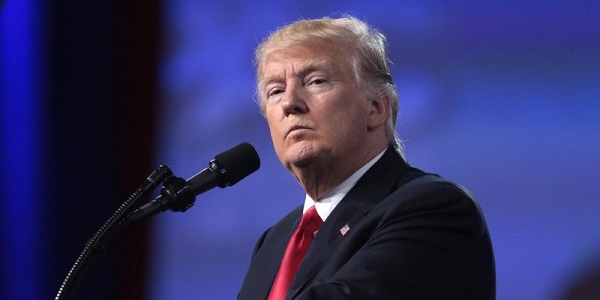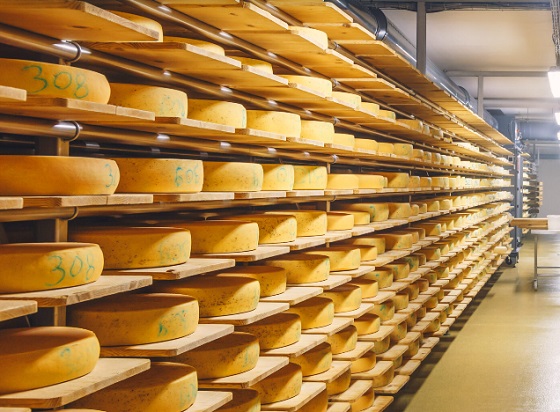Business
Trump victory means Canada must get serious about tax reform

From the Fraser Institute
By Jake Fuss and Alex Whalen
Following Donald Trump’s victory in Tuesday’s presidential election, lower taxes for both U.S. businesses and individuals will be at the top of his administration’s agenda. Meanwhile, Prime Minister Trudeau has raised taxes on businesses and individuals, including with his recent capital gains tax hike.
Clearly, Canada and the United States are now moving in opposite directions on tax policy. To prevent Canada from falling even further behind the U.S., policymakers in Ottawa and across Canada should swiftly increase our tax competitiveness.
Before the U.S. election, Canada was already considered a high-tax country that made it hard to do business. Canada’s top combined (federal and provincial) personal income tax rate (as represented by Ontario) ranked fifth-highest out of 38 high-income industrialized (OECD) countries in 2022 (the latest year of available data). And last year, Canadians in every province, across most of the income spectrum, faced higher personal income tax rates than Americans in nearly every U.S. state.
Our higher income tax rates make it harder to attract and retain high-skilled workers including doctors, engineers and entrepreneurs. High tax rates also reduce the incentives to save, invest and start a business—all key drivers of prosperity.
No doubt, we need reform now. To close the tax gap and increase our competitiveness, the federal government should reduce personal income tax rates. One option is to reduce the top rate from 33.0 per cent back down to 29.0 per cent (the rate before the Trudeau government increased it) and eliminate the three middle-income tax rates of 20.5 per cent, 26.0 per cent and 29.0 per cent.
These changes would establish a new personal income tax landscape with just two federal rates. Nearly all Canadians would face a personal income tax rate of 15.0 per cent, while top earners would pay a marginal tax rate of 29.0 per cent.
On business taxes, Canada’s rates are also higher than the global average and uncompetitive compared to the U.S., which makes it difficult to attract business investment and corporate headquarters that provide well-paid jobs and enhance living standards. According to Trump’s campaign promises, he plans to lower the federal business tax rate from 21 per cent to 20 per cent (and reduce the rate to 15 per cent for companies that make their products in the U.S.). Trump must work with congress to implement these changes, but barring any change in Canadian policy, business tax cuts in the U.S. will intensify Canada’s net outflow of business investment and corporate headquarters to the U.S.
The federal government should respond by lowering Canada’s business tax rate to match Trump’s plan. Moreover, Ottawa should (in coordination with the provinces) change tax policy to only tax business profits that are not reinvested in the company—that is, tax dividend payments, share buybacks and bonuses but don’t touch profits that are reinvested into the company (this type of business taxation has helped supercharge the economy in Estonia). These reforms would encourage greater business investment and ultimately raise living standards for Canadians. Finally, given Canada’s massive outflow of business investment, the government should (at a minimum) reverse the recent federal capital gains hike.
Of course, there’s much to quibble with in Trump’s policies. For example, his tariffs will hurt the U.S. economy (and likely Canada’s economy), and tax cuts without spending reductions and deficit-reduction will simply defer tax hikes into the future. But while policymakers in Ottawa can’t control U.S. policy, Trump’s tax plan will significantly exacerbate Canada’s competitiveness problem. We can’t afford to sit idle and do nothing. Ottawa should act swiftly in coordination with the provinces and pursue bold pro-growth tax reform for the benefit of Canadians.
Authors:
Business
Stripped and shipped: Patel pushes denaturalization, deportation in Minnesota fraud

FBI Director Kash Patel issued a blunt warning over the weekend as federal investigators continue unraveling a sprawling fraud operation centered in Minnesota, saying the hundreds of millions already uncovered represent “just the tip of a very large iceberg.”
In a lengthy statement posted to social media, Patel said the Federal Bureau of Investigation had quietly surged agents and investigative resources into the state well before the scandal gained traction online. That effort, he said, led to the takedown of an estimated $250 million fraud scheme that stole federal food aid intended for vulnerable children during the COVID pandemic.
According to Patel, the investigation exposed a network of sham vendors, shell companies, and large-scale money laundering operations tied to the Feeding Our Future case. Defendants named by the FBI include Abdiwahab Ahmed Mohamud, Ahmed Ali, Hussein Farah, Abdullahe Nur Jesow, Asha Farhan Hassan, Ousman Camara, and Abdirashid Bixi Dool, each charged with offenses ranging from wire fraud to conspiracy and money laundering.
Patel also said Abdimajid Mohamed Nur and others were charged in a separate attempt to bribe a juror with $120,000 in cash. He noted that several related cases have already resulted in guilty pleas, prison sentences of up to 10 years, and nearly $48 million in restitution orders.
Despite those outcomes, Patel warned the case is far from finished.
“The FBI believes this is just the tip of a very large iceberg,” he said, adding that investigators will continue following the money and that the probe remains ongoing. Patel further confirmed that many of those convicted are being referred to immigration authorities for possible denaturalization and deportation proceedings where legally applicable.
The renewed focus follows a viral video circulated by independent journalist Nick Shirley, which appeared to show multiple childcare and learning centers operating as empty or nonfunctional storefronts. The footage sparked immediate backlash from Republicans, including Vice President JD Vance.
House Majority Whip Tom Emmer accused Minnesota Gov. Tim Walz of sitting idle while massive sums were stolen from taxpayers. Walz addressed the allegations during a November press conference, before the full scope of the fraud became public, saying the scandal “undermines trust in government” and threatens programs meant to help vulnerable residents.
“If you’re committing fraud, no matter where you come from or what you believe, you are going to go to jail,” Walz said at the time.
Authorities say the alleged schemes date back to at least 2015, beginning with overbilling Minnesota’s Child Care Assistance Program and later expanding into Medicaid-funded disability and housing programs. One such housing initiative, aimed at helping seniors and disabled residents secure stable housing, was shut down earlier this year after officials cited what they described as large-scale fraud.
The fallout has already reached the federal level. Last month, President Trump announced the suspension of Temporary Protected Status for Somali nationals, arguing that Minnesota had become a hub for organized welfare fraud and money laundering activity.
Business
Mainstream media missing in action as YouTuber blows lid off massive taxpayer fraud

Vice President JD Vance is giving public credit to a YouTube journalist for doing what he says legacy media and elite institutions have failed to do: follow the money in Minnesota. In a post on X, Vance praised independent reporter Nick Shirley for digging into alleged fraud networks tied to the state, saying Shirley “has done far more useful journalism than any of the winners of the 2024 Pulitzer prizes.” The comment was a direct response to a video Shirley shared online documenting what he described as widespread fraud, with Shirley claiming his team identified more than $110 million in suspicious activity in a single day while confronting facilities allegedly receiving millions in public funds.
Shirley’s reporting has been circulating widely among conservatives, with commentators amplifying clips of him visiting supposed daycare and education centers that appeared inactive despite receiving massive federal aid. Conservative media personality Benny Johnson said Shirley had exposed more than $100 million in Minnesota Somali-linked fraud routed through fake daycare and healthcare fronts, adding to the pressure on state leadership. The issue gained further traction after Tom Emmer, Minnesota’s top House Republican, demanded answers from Gov. Tim Walz following a viral clip showing Shirley confronting workers at an alleged daycare in South Minneapolis. Shirley reported the center, called the “Quality Learning Center,” showed no visible activity despite claims it served up to 99 children, and even misspelled “learning” on its signage. As Shirley approached, a woman inside was heard shouting “Don’t open up,” while incorrectly accusing him of being an ICE agent.
🚨 Here is the full 42 minutes of my crew and I exposing Minnesota fraud, this might be my most important work yet. We uncovered over $110,000,000 in ONE day. Like it and share it around like wildfire! Its time to hold these corrupt politicians and fraudsters accountable
We ALL… pic.twitter.com/E3Penx2o7a
— Nick shirley (@nickshirleyy) December 26, 2025
The controversy builds on earlier reporting from City Journal, which published a November investigation citing federal counterterrorism sources who said millions of dollars siphoned through Minnesota fraud schemes had been sent overseas, with some of the money allegedly ending up in the hands of Al-Shabaab. One confidential source quoted in the report bluntly claimed, “The largest funder of Al-Shabaab is the Minnesota taxpayer.” Since that report, the scrutiny has widened inside the Trump administration. Treasury Secretary Scott Bessent has announced that the Treasury Department is examining whether Minnesota taxpayer funds were diverted to terrorist-linked groups, while Education Secretary Linda McMahon has publicly called on Walz to resign amid separate allegations of large-scale education fraud within the state’s college system.
Taken together, the attention from Vance, congressional Republicans, and multiple federal agencies has elevated Shirley’s reporting from viral internet content to a flashpoint in a broader debate over fraud, accountability, and the role of independent journalists. For the vice president, the message was clear: real accountability sometimes comes not from prize committees or press rooms, but from outsiders willing to ask uncomfortable questions and stand in front of locked doors with a camera rolling.
-

 Business2 days ago
Business2 days ago“Magnitude cannot be overstated”: Minnesota aid scam may reach $9 billion
-

 Business2 days ago
Business2 days agoLargest fraud in US history? Independent Journalist visits numerous daycare centres with no children, revealing massive scam
-

 Haultain Research20 hours ago
Haultain Research20 hours agoSweden Fixed What Canada Won’t Even Name
-

 Censorship Industrial Complex2 days ago
Censorship Industrial Complex2 days agoUS Under Secretary of State Slams UK and EU Over Online Speech Regulation, Announces Release of Files on Past Censorship Efforts
-

 Business20 hours ago
Business20 hours agoWhat Do Loyalty Rewards Programs Cost Us?
-

 Business8 hours ago
Business8 hours agoLand use will be British Columbia’s biggest issue in 2026
-

 Business6 hours ago
Business6 hours agoMainstream media missing in action as YouTuber blows lid off massive taxpayer fraud
-

 Business5 hours ago
Business5 hours agoStripped and shipped: Patel pushes denaturalization, deportation in Minnesota fraud










